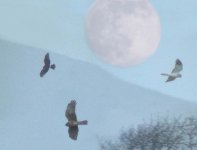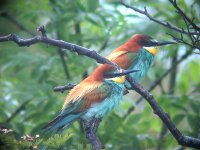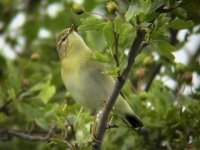Charles Harper
Régisseur
My apologies, I HAVE made an effort to read through all the videoscoping threads, but aside from a list of camera models, haven't found what I was looking for yet.
I haven't even got a camera; just a Swarovksi ATS65HD. Till now I have been waffling about which Nikon CP to get (balancing reviews with prices, basically); but I also need a digital video camera for other work and am now wondering (since I'll never be a serious digiscoper-- just want to be able to take some pix occasionally) if I should kill two birds with one stone (to employ an unfortunate cliché) and get a video camera to use with the scope instead.
Being advertised here in Japan now, for instance, is the Sony Digital Handycam DCR-TRV60(JE), which has a whole bunch of specs which I can't evaluate, but the ads say it has Progressive Recording Mode which 'allows every video frame to become a high res still photo'.
Q1: Does this sound promising? Or do I have to know what I'm doing first?
Q2: More importantly, are there certain video cameras which work supernaturally well with a scope, like the CP990/995/4500 series does in the case of still cameras?
Q3: Is there a danger that some video cameras will NOT adapt to my scope at all? What should I look for?
Please don't wear the characters off your keyboard, but some brief advice would be greatly appreciated. I am afraid to make any decision on my own-- my wife will kill me if I have to throw out any more expensive appliances.
I haven't even got a camera; just a Swarovksi ATS65HD. Till now I have been waffling about which Nikon CP to get (balancing reviews with prices, basically); but I also need a digital video camera for other work and am now wondering (since I'll never be a serious digiscoper-- just want to be able to take some pix occasionally) if I should kill two birds with one stone (to employ an unfortunate cliché) and get a video camera to use with the scope instead.
Being advertised here in Japan now, for instance, is the Sony Digital Handycam DCR-TRV60(JE), which has a whole bunch of specs which I can't evaluate, but the ads say it has Progressive Recording Mode which 'allows every video frame to become a high res still photo'.
Q1: Does this sound promising? Or do I have to know what I'm doing first?
Q2: More importantly, are there certain video cameras which work supernaturally well with a scope, like the CP990/995/4500 series does in the case of still cameras?
Q3: Is there a danger that some video cameras will NOT adapt to my scope at all? What should I look for?
Please don't wear the characters off your keyboard, but some brief advice would be greatly appreciated. I am afraid to make any decision on my own-- my wife will kill me if I have to throw out any more expensive appliances.







